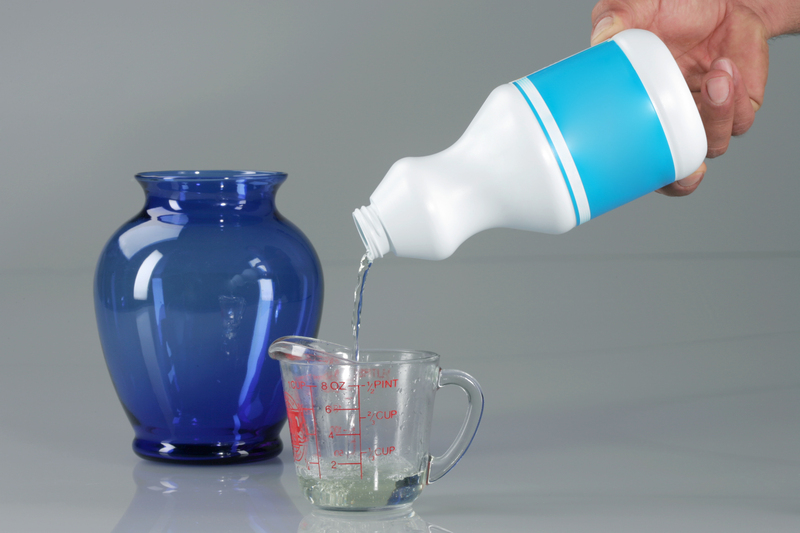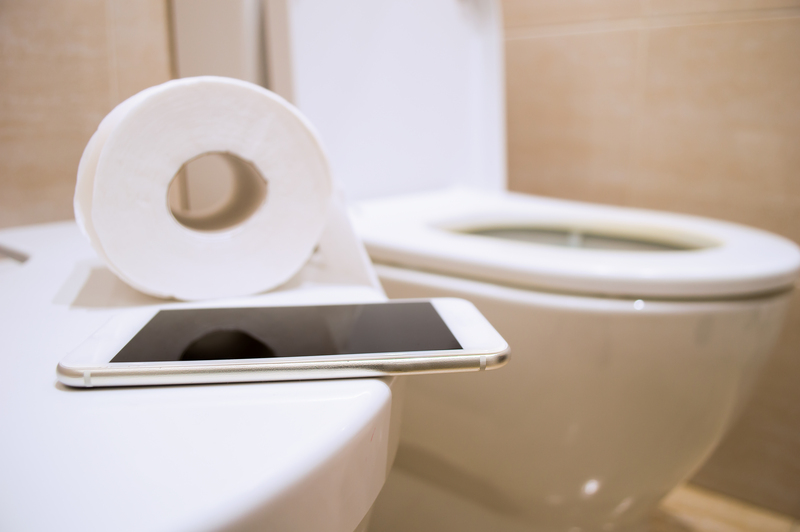Enhancing Indoor Environments through Superior Air Quality
Posted on 11/06/2025
Enhancing Indoor Environments Through Superior Air Quality
In today's fast-paced world, people spend a significant portion of their time indoors--be it at home, in offices, schools, or commercial buildings. With this ever-increasing indoor presence, air quality improvement becomes an essential consideration for health, comfort, and productivity. Enhancing indoor environments through superior air quality is not just a trend; it's a crucial investment in the well-being of occupants and a fundamental part of building management.
Understanding Indoor Air Quality (IAQ)
Indoor air quality (IAQ) refers to the condition of the air inside buildings, as it relates to the health and comfort of their occupants. More than just the absence of visible pollutants, maintaining superior IAQ involves minimizing invisible contaminants like volatile organic compounds (VOCs), particulate matter, bacteria, and allergens.
Main Factors Affecting Indoor Air Quality
- Ventilation: Adequate airflow helps to dilute and remove indoor pollutants.
- Moisture and Humidity: High humidity promotes mold and dust mites, while low humidity can irritate the respiratory system.
- Pollutant Sources: Chemicals, paints, cleaning agents, and pesticides can release harmful emissions.
- Building Materials: Certain construction materials and furnishings may off-gas harmful substances.
- Occupant Activities: Smoking, cooking, and hobbies can introduce various contaminants.
**Addressing these factors is key to guaranteeing elevated IAQ and a healthier indoor environment.**

Why Superior Air Quality Matters
Enhancing indoor environments through superior air quality yields benefits that extend far beyond basic comfort. Here's why prioritizing the quality of the air matters in every building type:
- Health and Wellness: Poor IAQ can lead to headaches, allergies, asthma, fatigue, and even more severe ailments with long-term exposure.
- Productivity and Cognitive Performance: Studies show that high-quality air improves focus, memory, and decision-making in workplaces and schools.
- Odor Control: Clean air eliminates unpleasant odors, offering a fresher and more inviting atmosphere indoors.
- Mold and Allergen Reduction: Superior air filtration mitigates the spread of irritants, pollen, and mold spores.
- Energy Efficiency: Modern IAQ systems can lower operational costs by optimizing ventilation and reducing reliance on energy-costly solutions.
Top Signs of Poor Indoor Air Quality
- Persistent sneezing, coughing, or allergy symptoms among occupants.
- Noticeable mold or mildew smell.
- Frequent headaches or fatigue.
- Condensation on windows or damp spots on walls.
- Excessive dust accumulation despite regular cleaning.
Recognizing these symptoms early is essential to taking corrective action before they evolve into more serious health concerns.
Common Indoor Pollutants You Should Know
Enhancing indoor environments through superior air quality starts with understanding the most common indoor pollutants. Some of the major culprits include:
- Particulate Matter (PM): Small particles from smoke, dust, and pollen that can penetrate deep into the lungs.
- Volatile Organic Compounds (VOCs): Gases released from paints, solvents, and cleaning products.
- Carbon Monoxide (CO): A colorless, odorless gas produced by incomplete combustion of fuels.
- Formaldehyde: Found in building materials, furniture, and some textiles.
- Biological Agents: Mold, bacteria, viruses, and dust mites.
- Radon Gas: A radioactive gas that can infiltrate homes through the ground.
Each pollutant poses unique challenges, requiring tailored solutions for effective air quality improvement.
Strategies for Achieving Superior Air Quality Indoors
The journey to enhanced indoor environments depends on proactive strategies that target pollutant reduction and control. Below are comprehensive tips and techniques for sustaining consistently superior air quality:
1. Source Control and Reduction
- Choose low-emission building materials and furnishings.
- Use natural, non-toxic cleaning products whenever possible.
- Prohibit indoor smoking and minimize the use of candles or incense.
- Opt for air-friendly paints and adhesives with low VOC content.
2. Enhance Ventilation
- Install or upgrade mechanical ventilation systems to ensure steady outdoor air exchange.
- Utilize exhaust fans in areas prone to moisture, such as kitchens and bathrooms.
- Open windows strategically to improve natural ventilation, when outdoor air quality is good.
3. Employ Advanced Air Filtration
- Use HEPA filters in HVAC systems and standalone air purifiers to trap tiny particulates.
- Incorporate activated carbon filters to eliminate odors and VOCs.
- Change filters regularly and opt for air purification units suited for your room size.
4. Monitor and Maintain Optimal Humidity
- Keep indoor humidity between 30% and 50% to prevent mold growth and dust mite proliferation.
- Invest in dehumidifiers or humidifiers as needed to regulate moisture levels.
- Address leaks and water intrusion promptly to avoid dampness.
5. Regular Cleaning and Maintenance
- Dust surfaces and vacuum with HEPA-filtered machines frequently.
- Launder bedding, curtains, and upholstery regularly to minimize allergen accumulation.
- Schedule professional HVAC inspections to keep systems running efficiently.
6. Integrate Greenery and Natural Elements
- Indoor plants can improve air quality by absorbing toxins and boosting oxygen levels.
- Select air-purifying varieties like spider plants, peace lilies, and snake plants.
- Ensure plants are maintained to prevent mold on soil or leaves.
The Role of Technology in Indoor Air Quality Improvement
Technological advancements have greatly expanded the toolkit for indoor air purification. Modern solutions offer both convenience and efficacy, making it easier than ever to maintain a healthy indoor environment. Some exemplary technologies include:
- Smart Air Quality Monitors: Constantly track pollutant levels, humidity, temperature, and CO2 concentrations, notifying users of any alarming trends.
- UV-C Light Purification: Uses ultraviolet light to destroy bacteria, viruses, and mold spores.
- Electrostatic Precipitators: Attract and capture ultrafine particles using static charge.
- Integrated HVAC Solutions: Centralized purification that automatically adjusts based on detected air quality.
Leveraging these advanced technologies lays the foundation for truly superior indoor air quality management.
Best Practices for Enhancing Indoor Air Quality at Home and Work
For Homes
- Ban smoking indoors entirely.
- Limit use of aerosol sprays and synthetic fragrances.
- Test for radon, especially in basement and ground-level rooms.
- Vent appliances like gas stoves and dryers directly outside.
- Adopt a "shoes-off" policy to prevent outdoor contaminants from being brought inside.
For Workplaces and Commercial Buildings
- Schedule regular HVAC maintenance and filter replacements.
- Maintain collaborative workspaces and conference rooms with heightened attention to ventilation.
- Encourage natural daylight and invest in plants for shared spaces.
- Assess and address sources of VOCs in office supplies and furniture.
- Promote a scent-free workplace policy to minimize allergic reactions.
Building Codes and Certification Standards for Indoor Air Quality
Awareness of regulations and standards can help reinforce the pursuit of superior indoor air purification. Certifications such as LEED (Leadership in Energy and Environmental Design) and WELL Building Standard include detailed criteria on air quality:
- LEED: Rewards efficient ventilation systems and low-emitting materials.
- WELL: Focuses on air filtration, source control, building cleaning, and moisture management.
- ASHRAE Standards: Provides ventilation and IAQ guidelines for various building types.
Following these guidelines encourages a systematic approach to achieving premier indoor air quality in new and existing buildings.
Cost-Benefit Analysis: Investing in Superior Air Quality
Enhancing indoor environments through superior air quality is an investment that yields substantial returns. These include:
- Reduced healthcare costs: Lower rates of respiratory diseases and absenteeism.
- Enhanced property value: Modern IAQ solutions and green certifications raise residential and commercial property desirability.
- Increased productivity and satisfaction: Healthier occupants mean more efficient workplaces and happier residents.
- Long-term savings: Optimized ventilation and filtration save on utility bills and system repairs.
While upgrading indoor air systems may represent an initial expense, the direct and indirect benefits overwhelmingly justify the investment.

Future Trends in Indoor Air Quality Enhancement
As awareness and concerns mount about indoor environments, the future promises:
- Wider adoption of real-time air quality sensors and automated ventilation.
- Further integration of AI in predicting pollution spikes and adjusting systems accordingly.
- Enhanced research in air-friendly building materials and finishes.
- Sustainability aligning with IAQ through nature-inspired technologies (biophilic design).
Conclusion: Prioritizing Superior Indoor Air Quality for Healthier Living
Enhancing indoor environments with superior air quality is no longer a mere luxury; it's a necessity for health, comfort, and sustainability. From residential homes to bustling workplaces, proactive steps towards air quality optimization--through source control, advanced filtration, technological integration, and maintenance--pay off in healthier, more productive, and enjoyable indoor spaces. Commit to improving indoor air quality today, and you'll create a safer, more vibrant environment for everyone.
For more tips and professional guidance, explore resources tailored to your specific building type and remember: cleaner air leads to a happier, healthier life indoors.




